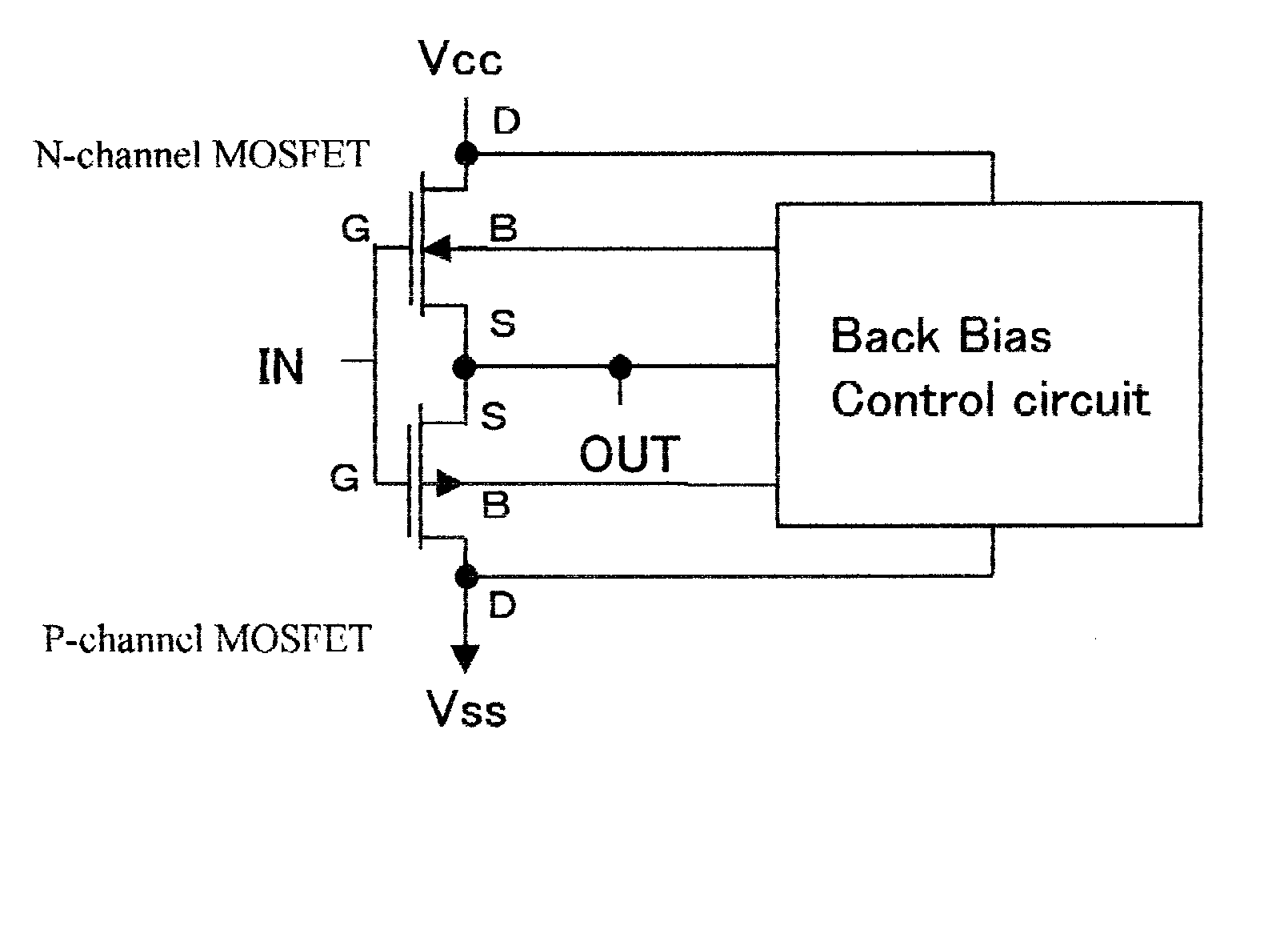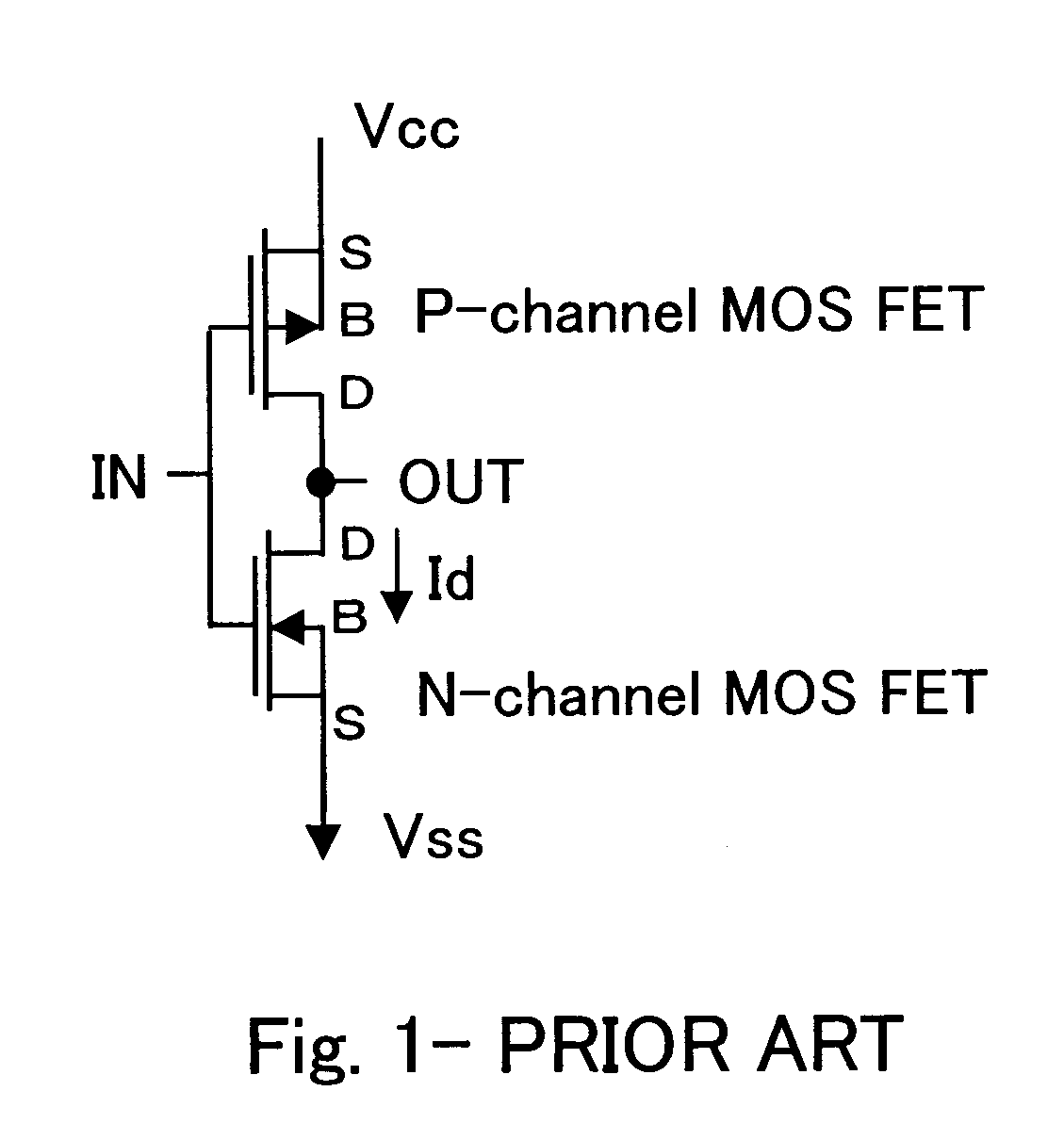Resistance load source follower circuit
a follower circuit and resistor technology, applied in pulse generators, pulse techniques, instruments, etc., can solve the problems of increasing power consumption, low driving power, waste of current flow, etc., and achieve the effect of eliminating the dead gap
- Summary
- Abstract
- Description
- Claims
- Application Information
AI Technical Summary
Benefits of technology
Problems solved by technology
Method used
Image
Examples
example
[0053] A complementary source follower circuit similar to that of FIG. 11 could have an NFET with a threshold voltage of 0.2 volts and a PFET with a threshold voltage of −0.2 volts, where Vcc is 0.9 volts and Vss is −0.9 volts. The level shift circuit could shift the input voltage of the NFET by −0.3 volts and the input voltage of the PFET by 0.3 volts to eliminate the dead gap. Then, in standby mode, the back bias control circuit could shift the threshold voltage of the NFET by 0.3 volts and the threshold voltage of the PFET by −0.3 volts to re-create a dead gap and reduce Id to zero.
PUM
 Login to View More
Login to View More Abstract
Description
Claims
Application Information
 Login to View More
Login to View More - R&D
- Intellectual Property
- Life Sciences
- Materials
- Tech Scout
- Unparalleled Data Quality
- Higher Quality Content
- 60% Fewer Hallucinations
Browse by: Latest US Patents, China's latest patents, Technical Efficacy Thesaurus, Application Domain, Technology Topic, Popular Technical Reports.
© 2025 PatSnap. All rights reserved.Legal|Privacy policy|Modern Slavery Act Transparency Statement|Sitemap|About US| Contact US: help@patsnap.com



